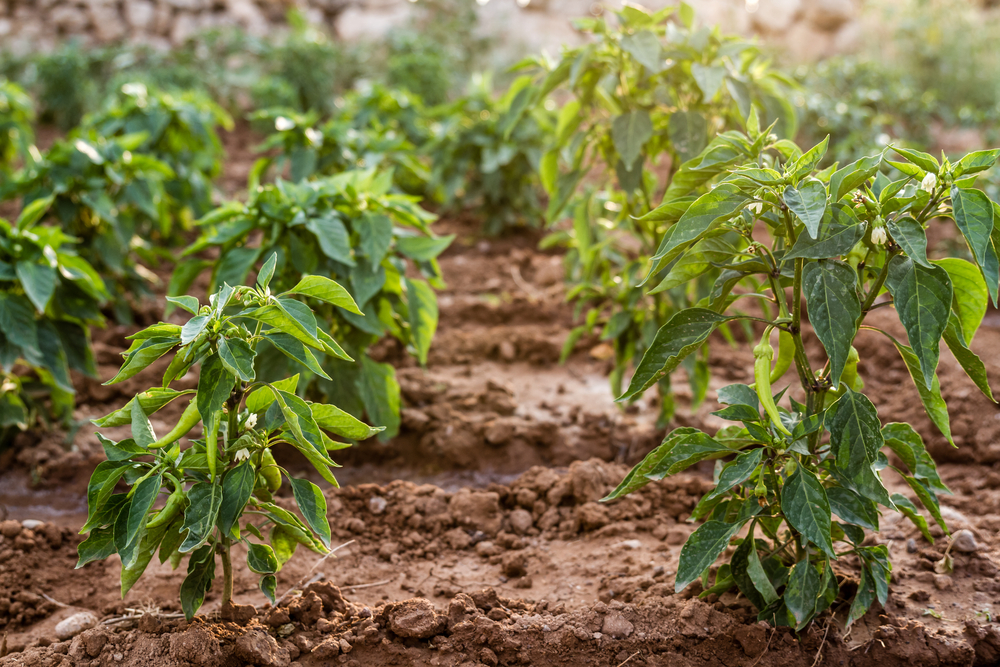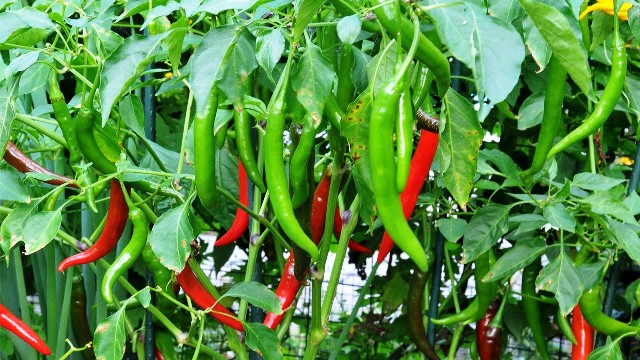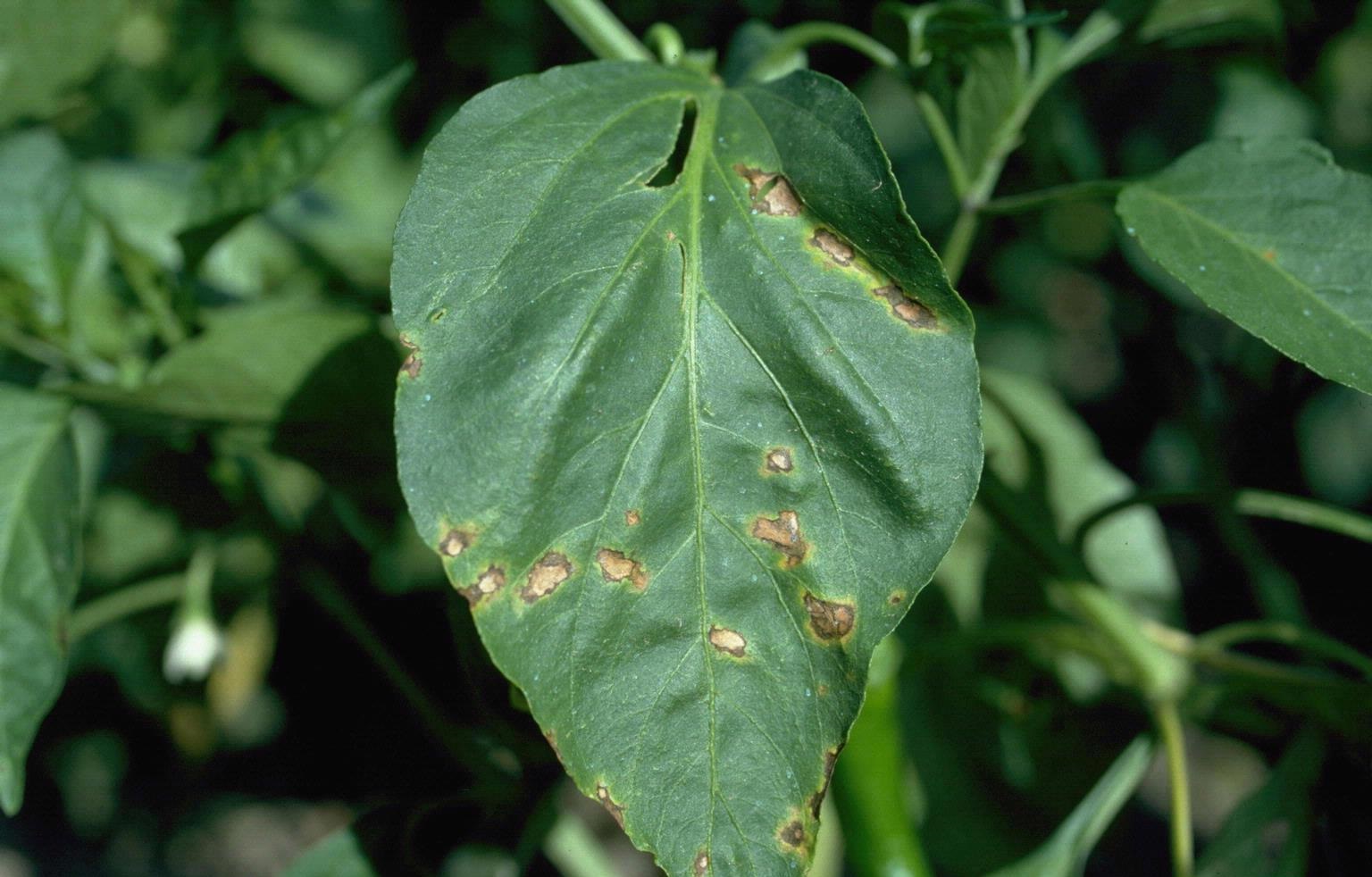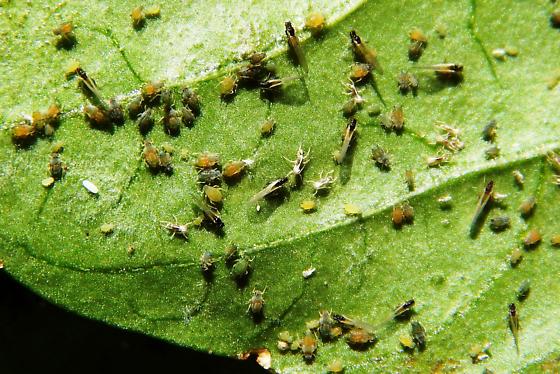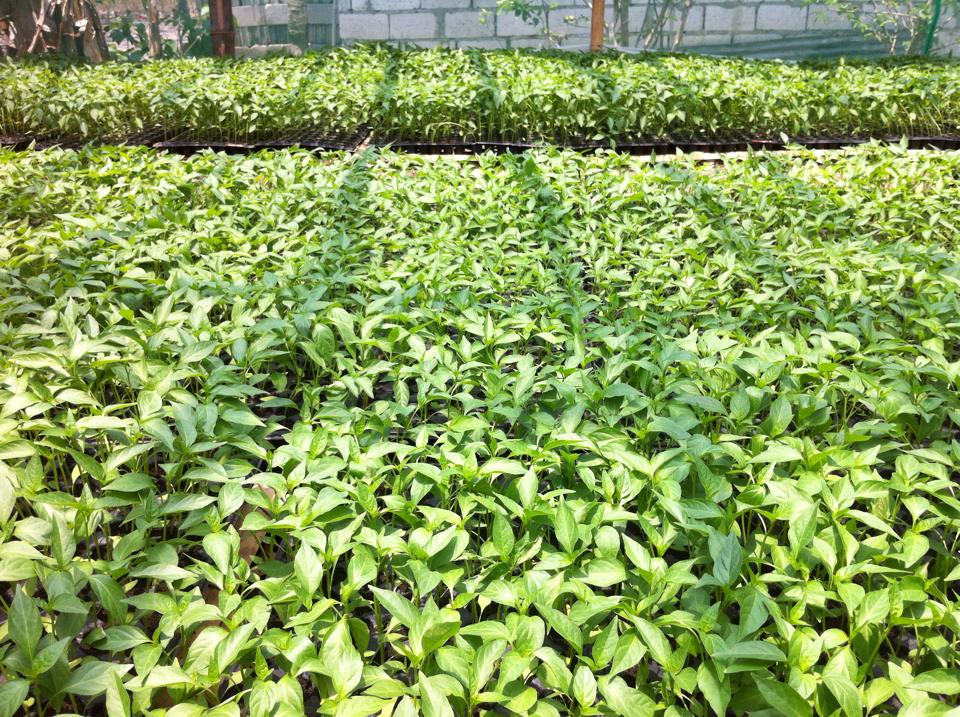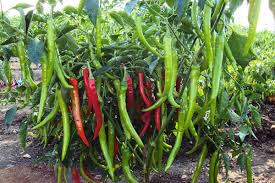- Before planting chilli seedlings, first of all, a deep plowing should be done in the field with a soil-turning plow. By doing this, the harmful insects present in the soil, their eggs, the pupa stage of the insect, and the spores of the fungi are also destroyed.
- After plowing the field 3 to 4 times, the field should be leveled. After the final plowing, a gramophone offering ‘Chilli Samriddhi Kit’ with a quantity of 5.3 kg should be mixed with 100 kg of FYM per acre and then lightly irrigate it.
- This ‘Chilli Samriddhi Kit’ will become the protective shield of your chili crop. In this kit, you will get everything that is needed by the chili crop. This kit has many products attached.
- The Chilli Samriddhi Kit consists of four types of bacteria ‘nitrogen fixation bacteria, PSB, and KMB.zinc bacteria solubilize Insoluble zinc and makes it available to plants. It is one of the most important micronutrients for plant growth.
- Chilli Samriddhi Kit kills pathogens that occur in soil and seeds, helps in the growth of flowers, fruits, leaves, etc. as well as helps in the growth of white roots.
Transplanting method and fertilizer management of Chilli
- In the field, deep plowing and 3-4 plowing with harrows or native plow should be done. By doing this, the harmful insects present in the soil, their eggs, the pupa, spores of the fungi are also destroyed. After that field should be platted.
- After the final plowing, the ‘Chilli Samriddhi Kit’ published by Gramophone, which has a volume of 6.3 kg, should be mixed well with the final plowing or sowing time @ 5 tonnes per acre FYM. After that, give light irrigation.
- After 35 to 40 days of sowing the chilli plant is ready for transplanting. Transplanting of rainy chilli plants should be done from mid-June to mid-July.
- Before transplanting, light irrigation should be done in the nursery and the field, by doing this the root of the plant does not break, the growth is good and the plant gets planted easily.
- After removing the plant from the nursery, it should not be kept directly in the sun.
- For good growth of roots, make a solution in one-liter water at 5 grams of mycorrhiza per liter. After this, the roots of chili plants should be submerged in this solution for 10 minutes. After adopting this process, transplanting in the field so that chilli plants remain healthy in the field.
- The distance of chili plants should be 60 cm and 45 cm from a distance of row to row & plant to plant respectively. Light water should be given to the field immediately after transplanting.
- At the time of transplanting fertilizer basal dose 45 kg Urea, 200 kg SSP and 50 kg MOP should be broadcast in the one-acre field.
Know the symptoms of Bacterial leaf spot disease in Chilli crop
- The first symptoms appear as small yellowish-green spots on the new leaves and these leaves are deformed and twisted.
- Later on, the leaves show small circular or irregular, dark brown or black smooth spots. As these spots grow in size, the middle part becomes lighter and the outer part becomes darker.
- Finally, these spots turn into holes because the middle part of the leaves dries up and bursts.
- In severe infection, the affected leaves fall prematurely.
- Submerged spots form round, bulging, yellow edges on the fruit.
How to identify and protect Aphid insect in Chili crop
- Aphid is a small, soft bodied insect that can be yellow, brown or black colour.
- They usually sucking from the plant by forming colonies at the corners of small leaves and release sticky honeydew, which increases the chances of fungal diseases.
- Leaves and twigs may wither or become yellow due to severe infection.
- To protect against Aphid pests, spray 100 gram Thiamethoxam 25 WG or 100 ml Imidacloprid 17.8% SL with 200 liters of water per acre.
- Use Beauveria bassiana 1 kg per acre by biological means or can also be used in combination with the above pesticide.
Method of sowing Chilli seeds in nursery
It is very important to keep some things in mind while sowing chilli seeds in the nursery. This produces good seedlings in the nursery.
- To prepare chilli plantation, firstly sowing the seeds in 3 x 1.25 m size beds.
- These beds should be raised 8-10 cm high from the ground so that seeds and plants do not rot due to water accumulation.
- Add 750 gm DAP, 100 gm Incryl (seaweed, amino acids, humic acid and Mycorrhiza) and 250 gm Trichoderma viride per square meter to the soil in 150 kg FYM to increase plant growth with soil structure. and it also protects against harmful soil borne fungal diseases.
- The nursery requires 60-80 grams of chilli seeds for one acre field.
- Sowing seeds by making 0.5-1 cm deep drains at a distance of 5 cm in the beds.
- After sowing, continue irrigating as needed.
How to choose a location for planting chili nursery?
While choosing the place for planting chilli nursery, we can get good production from its crop by keeping some things in mind.
- The land should be fertile, loamy soil, weed free and have a good drainage system.
- Do not choose acidic or alkaline soil.
- Near the nursery should not have very large trees.
- The nursery has long sunlight.
- Near the nursery should have irrigation facilities.
- The chosen area should be high so that water does not stay.
- Do not build a nursery repeatedly in one place.
Know about the best Varieties of Chili
- Hyveg Saniya: This variety of chilli is intermediate resistance for bacterial wilt & Chilli Mosaic Virus and the first harvesting is done in 50–55 days. This variety is high pungency as well as having shiny yellowish-green. Its fruits are 13–15 cm in length, 1.7 cm in thickness and weigh about 14 grams.
- Mahyco Navtej (MHCP-319): This is a powder mildew/ drought-tolerant variety. This hybrid variety is of medium to high pungency which has long storage capacity. Chilli length is 8-10 cm.
- Mahyco 456: This variety has high pungency and chili length is 8-10 cm.
- Hyveg Sonal: Chilli is 14 cm in length with a moderate pungency level, which is a good variety for drying.
- Syngenta HPH-12: It has high seed content and pungency. Its plant and branches are strong bushings.
- Nunhems US- 1003: A medium-length plant with light green fruits, whose fruits are of good quality.
- Nunhems US- 720: Dark green chili which is a moderate pungency level.
- Nunhems Indu: This variety is resistant to mosaic virus and powdery mildew disease and has good storage capacity.
- Starfield Jini: This variety is tolerant to viruses.
- VNR Charmi (G-303): This variety has characteristics like light green color, medium pungency, and 14 cm chilli length. Its first picking is done in 55-60 days.
- Starfield Rome- 21: Tolerant of viruses and gives more productions. It is the best variety for red chili.
Know the benefits of soil treatment in chilli nursery
- Many major insect pests and soil-borne diseases are found in the soil, which damages the crops in various ways. Mainly termites, white grub, cutworm, nematodes, etc. can be destroyed by soil treatment.
- Soil-borne spores of fungus/ bacterial diseases are also found in the soil, which infects various stages of the plant under favorable conditions and causes loss in crop production.
- Soil treatment leads to the complete development of chilli plants, complete nutritional growth, and rich quality production.
- Along with improving soil structure, the attack of sucking pests and diseases also reduces.
- After the attack of pests and diseases, the treatment by chemicals is used more, as a result of which the cost of production increases due to more chemical expenditure.
Knowledge of advanced varieties of chili
Hyveg Saniya:
- This variety of chilli is intermediate resistance for bacterial wilt and Chilli Mosaic Virus.
- The chillies of this variety are 13-15 cm long, 1.7 cm thick and weighs around 14 grams. They are shiny yellowish-green in colour.
- The first harvesting of this variety takes place in 50–55 days.
Mahyco Navtej (MHCP-319):
- This is powder mildew and drought-tolerant variety.
- This hybrid variety is of medium to high pungency which has long storage capacity.
Watch this video to know more about other high yielding varieties of chilli-
ShareChilli Festival: Now the world will taste Nimar’s chilli, big opportunity for farmers.
The tangy taste of Nimar’s chillies is already famous among the residents of Madhya Pradesh, and now its fame is going to spread throughout the nation. It may also get recognised all over the world. This will happen through the upcoming Chilli Festival. This Chilli Festival, which is locally known as Mirch Mahotsav, is going to happen from 29 February to 1 March at Kasravad, MP. This two-day state-level festival is organized by the MP government with the main goal of promoting Nimar’s chilli in India and abroad.
The farmers who cultivate chilli in the region will benefit the most from this festival. This will lead to the branding of the chilli grown in Nimar and its surrounding areas and will open new markets for it throughout the nation and abroad.
In this event, the farmers will get important information related to the production of chilli crop by more than 25 agricultural scientists. Our Gramophone will also be present there to serve you. Which means you can ask for any kind of agriculture advice or suggestions from our agricultural experts too.
Share
